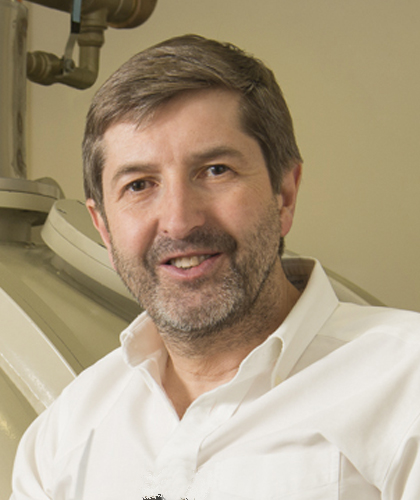Paper focuses on controlling magnetic domain behaviors in two-dimensional quantum magnets
Mixed use space will allow for expansion of quantum research and education at UMD
Recognized for work in fundamental physics
At International Conference, President Pitches Vision of Future Enhanced by UMD-Led Research
Application of quantum sensors to search for dark matter featured in December 2022 issue.
Will promote further understanding of quantum technology
Company seeks to identify the most promising ideas in quantum technology and create companies that can translate the technology into solutions for society.
QTC gets new home with the recent opening of the E.A. Fernandez IDEA Factory.
Multidisciplinary University Research Initiative (MURI) awards support growth of newly emerging technologies.
Hyperfine has created the next generation of MRI by addressing the challenges of conventional MRI and bringing MRI to the patient’s bedside.
ECE Professor and QTC Founding Director Ronald Walsworth featured on an episode of JQI's
Relatively Certain podcast.
The MLA150 instrument supports various research projects in materials science, nanoscience, energy science, and quantum science.
The University of Maryland is one of 11 academic institutions that make up the Center for Integration of Modern Optoelectronic Materials on Demand (IMOD).
Prof. Gong and students leverage quantum materials to to detect tiny quantities of airborne molecules.
The partnership has unlocked the potential of diamond as a quantum material.
QTC Researchers collaborate with MITRE and Harvard to present a new method for backside integrated circuit (IC) magnetic field imaging using Quantum Diamond Microscope (QDM) nitrogen vacancy magnetometry.
Drs. Joseph Britton, Jonathan Hoffman, and Kevin Cox are joining QTC from the DEVCOM Army Research Laboratory.
The project utilizes advancements in quantum sensing with Nitrogen Vacancy (NV) centers in diamond to enable diagnostic capabilities in extreme environments.
From extreme batteries to windows made from wood, Clark School’s trendsetting work ranks it among the country’s Top 10 public engineering schools for the 3rd consecutive year.
SABRE-enhanced NV-NMR may become a high-impact tool for biological applications, such as tracking and monitoring of chemical reactions of metabolites in single cells.
The University of Maryland's Quantum Technology Center (QTC) entered today into an Education Partnership Agreement with the U.S. Naval Research Laboratory (NRL) to identify and pursue opportunities related to quantum technology research.
A Quantum Diamond Microscope, augmented with Machine Learning, has been used to noninvasively probe activity within an integrated circuit.
UMD Professor and Quantum Technology Center Director, Ronald Walsworth, and his colleagues, have developed a way to use diamonds to see the elusive details of electrical currents.
QTC researchers and colleagues report a new quantum sensing technique that allows high-resolution NMR spectroscopy on small molecules in dilute solution in a 10 picoliter sample volume.
Ronald (Ron) Walsworth joined the University of Maryland in August as a Minta Martin Professor of Electrical and Computer Engineering, and as Director of the Quantum Technology Center.
The new research center will catalyze the development of high-impact quantum technologies.
